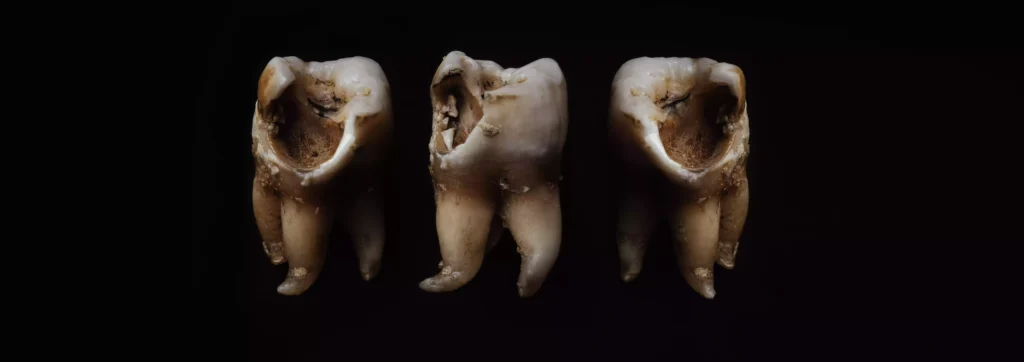Click to call
When Is a Tooth Considered Grossly Destructed?
A tooth is considered grossly destructed when it has suffered extensive damage, often due to severe decay, trauma, or long-standing neglect. This damage goes beyond a simple cavity or chip; it typically means that a large portion of the tooth structure is compromised, leaving little to no healthy tooth material left to support a filling or crown.
Dentists diagnose a tooth as grossly destructed when it no longer has enough structural integrity to function properly or to be restored effectively. This level of damage often extends into the core of the tooth, affecting the pulp (the nerve) and even reaching the bone.

Why Do Grossly Destructed Teeth Need to Be Removed?
The decision to remove a grossly destructed tooth is not taken lightly, but it’s often necessary to prevent further complications. Here’s why:
Infection Risk: When a tooth is severely damaged, bacteria can easily invade the pulp and spread to the surrounding bone, leading to a painful abscess. This infection can compromise your overall oral health and, if left untreated, can even lead to more serious health issues.
Irreparable Damage: In many cases, the damage to the tooth is so extensive that it cannot be restored with a filling, crown, or even a root canal. Attempting to save such a tooth could lead to further pain, repeated infections, and the eventual need for extraction anyway.
Pain and Discomfort: A grossly destructed tooth can cause significant discomfort, ranging from sensitivity to sharp, throbbing pain. This pain can interfere with your daily life, making it difficult to eat, speak, or even sleep.

Possible Symptoms of a Grossly Destructed Tooth
If you’re wondering whether you might have a grossly destructed tooth, here are some common symptoms to watch for:
- Severe Toothache: Pain that doesn’t go away, even after taking painkillers.
- Sensitivity: Sharp pain when eating or drinking something hot, cold, or sweet.
- Visible Damage: A large portion of the tooth is missing, or the tooth appears cracked or broken.
- Swelling: Gums around the tooth may be swollen, red, or tender to the touch.
- Bad Breath: Persistent bad breath or a foul taste in your mouth, often a sign of infection.
- Pus: In advanced cases, you might notice pus around the affected tooth, indicating an abscess.
The Extraction Process: What to Expect
If your dentist determines that your grossly destructed tooth needs to be removed, they will guide you through the extraction process. Here’s what you can typically expect:
Consultation and X-Rays: Your dentist will start with a thorough examination, often including X-rays, to assess the extent of the damage and plan the extraction.
Anesthesia: Before the extraction, your dentist will numb the area around the tooth with local anesthesia to ensure you don’t feel pain during the procedure.
Extraction: The dentist will carefully remove the tooth. In some cases, if the tooth is severely damaged or broken, it may need to be removed in pieces.
Post-Op Care: After the extraction, your dentist will provide instructions on how to care for the extraction site, including managing any pain or swelling. This may include taking prescribed medications, applying ice packs, and avoiding certain foods and activities.
Life After Extraction: What’s Next?
Losing a tooth, especially one that’s been giving you trouble, can be a relief. However, it’s important to discuss your options for replacing the missing tooth with your dentist. Depending on your situation, you might consider:
- Dental Implants: A long-lasting solution that looks and functions like a natural tooth.
- Bridges: A dental bridge can fill the gap left by the missing tooth, anchored by the adjacent teeth.
- Dentures: For those missing multiple teeth, dentures might be a suitable option.
The Bottom Line
A grossly destructed tooth is more than just a nuisance—it’s a serious dental issue that requires prompt attention. By understanding the signs, symptoms, and treatment options, you can take control of your oral health and prevent further complications. If you’re experiencing any of the symptoms mentioned above, don’t hesitate to reach out to your dentist for an evaluation. Early intervention can save you from unnecessary pain and ensure that your smile stays healthy and strong.
